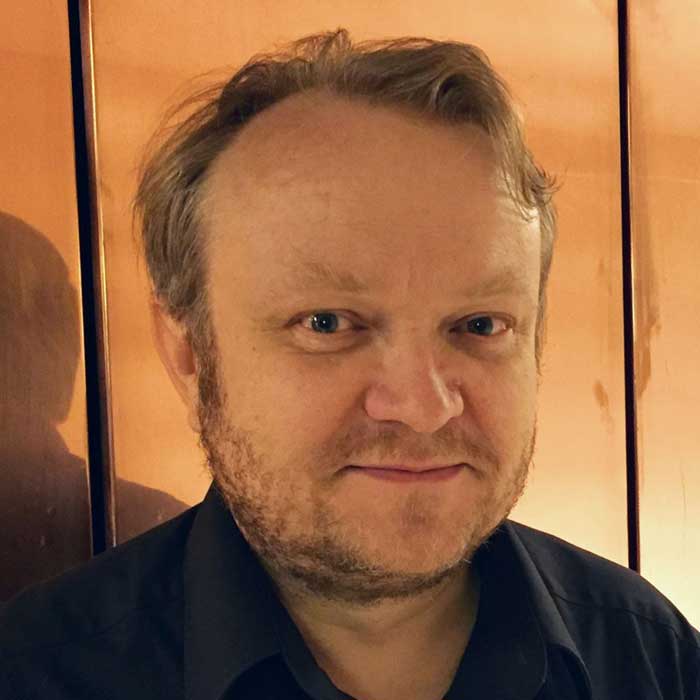
"If it is not logic, it's magic."
- Jarkko Oikarinen
The history of IM (Instant Messaging) on the internet is wide, spanning over three decades of new developments and innovations.
From peer-to-peer protocol to multi-protocol IM clients like Digsby and Adium, the industry has come a long way from its roots in the 1970s. Jarkko Oikarinen was the first inventor of the internet chat network, known as IRC (Internet Relay Chat) that earned him the nickname "WiZ".
The IRC gave birth to the modern chat movement.
Beside being the first chat network, IRC is considered as one of the most widely used internet chat system, and as seems often to be the case with internet technologies. He earned a Dvorak Award for Personal Achievement among other awards from his work that created a community that opened a gateway to real-time online multi-user interactions.
Early Life
Jarkko Oikarinen was born on August 16th, 1967, in Kuusamo, Finland.
During his studies for his Master degree in Electrical Engineering at University of Oulu, he created IRC.
The Internet Relay Chat
When Jarkko Oikarinen was working in the Department of Information Processing Science in University of Oulu during summer 1988, his employers that didn't give him much work to do gave him more spare time.
At the time, Oikarinen was administering the department's Sun server. In his spare time, Oikarinen started creating a communications program, which was meant to make OuluBox (a Public Access BBS running on host tolsun.oulu.fi, administered by him) a little more usable.
The purpose was to allow USENET News-kind of discussion and groups there in addition to real time discussions and other BBS related stuff. Jyrki Kuoppala had implemented a program for sending messages to people on other machines, although supports channel concepts, has not implemented it. This made the program mainly used for person-to-person communications.
Although at that time there was already an existing simple multiuser chat program on OuluBox, called MUT (MultiUser Talk) by Jukka Pihl, the program wasn't working properly. In order to fix its flaws, the first implemented thing of this BBS plan was to create the IRC.
In August 1988, Oikarinen wrote the first IRC server and client programs, which he produced to replace MUT. Inspired by the Bitnet Relay chat system, he continued to develop IRC over the next four years, assisted by Darren Reed in co-authoring the IRC Protocol.
IRC that was originally a plain text protocol (although later extended) is an open protocol that uses TCP and TLS. An IRC server can connect to other IRC servers to expand the IRC network. Users access IRC networks by connecting a client to a server. There are many client implementations, such as mIRC, XChat and irssi, and server implementations, e.g. the original IRCd.
Most IRC servers do not require users to register an account but a user will have to set a nickname before being connected.
Attempts And The Growing Channels
Oikarinen contacted some of his friends through BITNET Relay and asked if they would try the program. Since internet connections at that time did not yet work from Finland to other countries, they could not connect to the Finnish network. "I suppose was the reason for them not being very enthusiastic about IRC," said Oikarinen.
When Internet connections started to go global, Oikarinen's effort to promote IRC continued when he answered news articles where people asked for multi-user chat programs. The result was less than expected when he get less to no replies.
At MIT, there was machine running ITS. Oikarinen then got an account on this well-known machine "ai.ai.mit.edu" and learned to use it, enough to know how to chat with people. at the university MIT, from which he recruited the first IRC user outside Scandinavia, Mike Jacobs, and gave the IRC software to Vijay Subramaniam. Subramaniam passed the software to his friends: Jeff Trim at the University of Denver, David Bleckmann and Todd Ferguson at Oregon State University, who began running IRC on their machines "orion.cair.du.edu" and "jacobcs.cs.orst.edu" respectively.
They emailed Oikarinen and obtained connections to the Finnish IRC network to create transatlantic connection, and the number of IRC servers began to grow rapidly across both North American and Europe.As these people wanted to connect to Finnish IRC network, the number of users increased and the number of servers grew quickly.
IRC became well known to the general public around the world in 1991, when its use skyrocketed as users logged on to get up-to-date information on Iraq's invasion of Kuwait, through a functional IRC link into the country that stayed operational for a week after radio and television broadcasts were cut off.
As of April 2011, the top 100 IRC networks served more than half a million users at a time, with hundreds of thousands of channels operating on about 1,500 servers out of roughly 3,200 servers worldwide. The first IRC server (and still running) is "tolsun.oulu.fi".
Other Careers
Jarkko Oikarinen received his Ph.D. from the University of Oulu in 1999, in areas of computer graphics and medical imaging, his efforts in the latter field focused on telemedicine, volume rendering, signal processing and computed axial tomography.
Oikarinen is also partner and chief software architect at an electronic games developer called Numeric Garden (Espoo, Finland). His earlier positions include Chief Software Architect of Add2Phone Oy (Helsinki, Finland), Head of R&D in Capricode (Oulu, Finland) and General Manager in Nokia.
Oikarinen is currently working for Google on the Google Hangouts project in Sweden.
Awards And Personal Life
In 1997, Jarkko Oikarinen's development of IRC earned Oikarinen a Dvorak Award for Personal Achievement - Outstanding Global Interactive Personal Communications System. In 2005, the Millennium Technology Prize Foundation, a Finnish public-private partnership, honored him with one of three Special Recognition Awards.
Jarkko Oikarinen married his wife, Kaija-Leena, in 1996. The couple have three children. With his work, Oikarinen that is also known as "WiZ", lives with his family in Kuusamo, Finland.